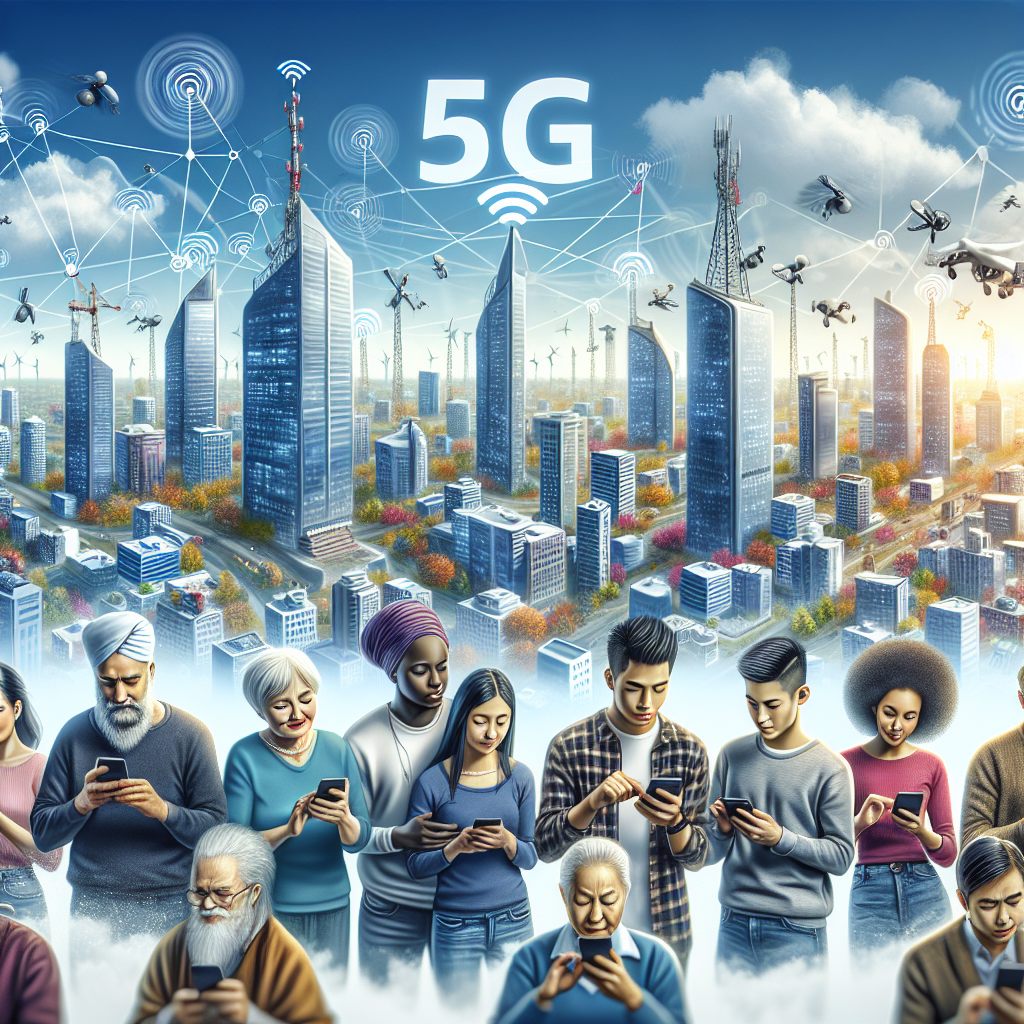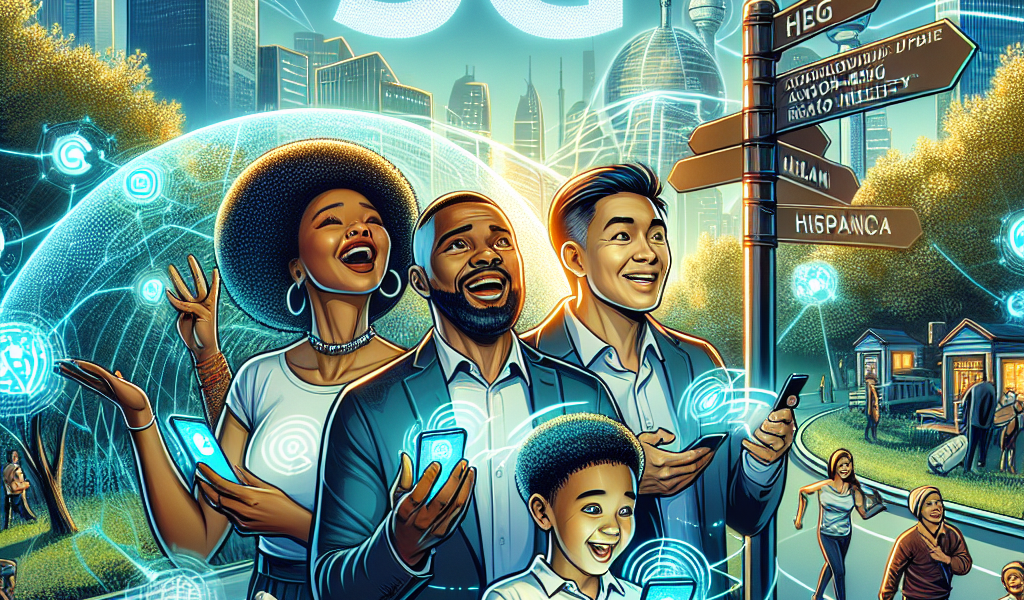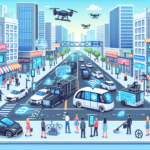-
Table of Contents
“Revolutionizing Connectivity: The 5G Transformation in Mobile Technology”
Introduction

The advent of 5G technology marks a significant milestone in the evolution of mobile communications, promising to revolutionize the way we connect, communicate, and interact with the digital world. As the fifth generation of wireless technology, 5G offers unprecedented speed, ultra-low latency, and enhanced connectivity, which collectively pave the way for a myriad of innovations and applications. This transformative impact extends across various sectors, including healthcare, transportation, entertainment, and smart cities, fundamentally altering the landscape of mobile technology. By enabling faster data transfer rates, more reliable connections, and the capacity to support a massive number of devices simultaneously, 5G is set to unlock new potentials in mobile technology, driving forward the next wave of digital transformation and fostering a more interconnected and intelligent global ecosystem.
Enhanced Connectivity and Speed: How 5G is Revolutionizing Mobile Internet
The advent of 5G technology is poised to revolutionize mobile internet, bringing enhanced connectivity and unprecedented speed to users worldwide. As the fifth generation of mobile networks, 5G promises to deliver faster data transfer rates, lower latency, and more reliable connections, fundamentally transforming how we interact with our devices and the digital world. This leap forward in mobile technology is not just an incremental improvement but a significant shift that will impact various aspects of our daily lives.
To begin with, one of the most notable benefits of 5G is its remarkable speed. While 4G networks offer download speeds of up to 100 Mbps, 5G can potentially reach speeds of up to 10 Gbps. This means that downloading a high-definition movie, which might take several minutes on a 4G network, could be completed in mere seconds with 5G. Such rapid data transfer rates will enable users to stream high-quality video content without buffering, download large files almost instantaneously, and enjoy smoother online gaming experiences. Consequently, the enhanced speed of 5G will cater to the growing demand for high-bandwidth applications and services.
In addition to speed, 5G technology also boasts significantly lower latency compared to its predecessors. Latency, the time it takes for data to travel from one point to another, is a critical factor in determining the responsiveness of a network. With 4G networks, latency typically hovers around 50 milliseconds, whereas 5G aims to reduce this to as low as 1 millisecond. This drastic reduction in latency will be particularly beneficial for applications that require real-time communication, such as virtual reality (VR), augmented reality (AR), and telemedicine. For instance, surgeons performing remote operations will be able to rely on near-instantaneous feedback, ensuring greater precision and safety.
Moreover, 5G’s enhanced connectivity will support a massive increase in the number of connected devices. The Internet of Things (IoT) is rapidly expanding, with smart homes, wearable technology, and connected vehicles becoming more prevalent. 5G networks are designed to handle this surge in connected devices, providing the necessary bandwidth and reliability to ensure seamless communication between them. This will pave the way for smarter cities, where everything from traffic lights to public transportation systems can be interconnected and optimized for efficiency.
Furthermore, the deployment of 5G will drive innovation across various industries. In the realm of healthcare, for example, 5G-enabled devices can facilitate remote patient monitoring, allowing doctors to track vital signs and provide timely interventions without the need for in-person visits. In the automotive sector, 5G will be instrumental in the development of autonomous vehicles, enabling them to communicate with each other and with infrastructure in real-time to enhance safety and navigation. The entertainment industry will also benefit, with immersive experiences such as VR concerts and interactive gaming becoming more accessible to the masses.
However, the transition to 5G is not without its challenges. The rollout of this new technology requires significant investment in infrastructure, including the installation of new base stations and the upgrading of existing ones. Additionally, there are concerns about the potential health effects of increased exposure to radiofrequency radiation, although current research suggests that 5G is safe within established guidelines.
In conclusion, the impact of 5G on mobile technology cannot be overstated. With its enhanced connectivity and speed, 5G is set to revolutionize the way we use mobile internet, offering faster, more reliable, and more responsive connections. As this technology continues to evolve and become more widespread, it will unlock new possibilities and drive innovation across various sectors, ultimately transforming our digital landscape for the better.
The Role of 5G in Advancing Mobile Applications and Services
The advent of 5G technology is poised to revolutionize the landscape of mobile applications and services, ushering in an era of unprecedented speed, connectivity, and innovation. As the fifth generation of wireless technology, 5G promises to deliver data speeds up to 100 times faster than its predecessor, 4G LTE. This leap in performance is not merely about faster downloads and smoother streaming; it is about transforming the very fabric of mobile technology and the services it supports.
One of the most significant impacts of 5G on mobile applications is the enhancement of real-time communication. With latency reduced to as low as one millisecond, applications that rely on instantaneous data exchange, such as video conferencing, online gaming, and augmented reality (AR), will experience a dramatic improvement in performance. For instance, video calls will become more seamless, with higher resolution and fewer interruptions, making remote work and virtual meetings more efficient and enjoyable. Similarly, online gaming will benefit from reduced lag, providing gamers with a more responsive and immersive experience.
Moreover, 5G’s increased bandwidth and capacity will enable the proliferation of the Internet of Things (IoT). This network of interconnected devices, ranging from smart home appliances to wearable health monitors, relies on constant and reliable data transmission. With 5G, the number of devices that can be connected simultaneously will skyrocket, paving the way for smarter cities, more efficient transportation systems, and enhanced healthcare services. For example, smart traffic lights could communicate with autonomous vehicles to optimize traffic flow, while remote patient monitoring could provide real-time health data to doctors, improving patient outcomes.
In addition to enhancing existing applications, 5G will also serve as a catalyst for new and innovative services. The ultra-reliable low-latency communication (URLLC) capabilities of 5G will open up possibilities for applications that were previously deemed impractical. One such area is telemedicine, where real-time remote surgeries could become a reality, allowing specialists to operate on patients from across the globe with precision and minimal delay. Another promising field is virtual reality (VR), where 5G’s high-speed connectivity will enable more immersive and interactive experiences, from virtual travel to remote education.
Furthermore, the impact of 5G on mobile applications extends to the realm of artificial intelligence (AI) and machine learning. The vast amounts of data generated by 5G-enabled devices can be harnessed to train more sophisticated AI models, leading to smarter and more intuitive applications. For instance, AI-powered personal assistants could become more adept at understanding and predicting user needs, while machine learning algorithms could enhance mobile security by detecting and mitigating threats in real-time.
As we transition into this new era of connectivity, it is important to acknowledge the challenges that come with the deployment of 5G. The infrastructure required to support 5G networks is extensive and costly, necessitating significant investment from both public and private sectors. Additionally, concerns about data privacy and security will need to be addressed, as the increased connectivity and data flow present new vulnerabilities.
Nevertheless, the potential benefits of 5G far outweigh these challenges. By enabling faster, more reliable, and more versatile mobile applications and services, 5G has the potential to transform industries, improve quality of life, and drive economic growth. As we stand on the brink of this technological revolution, it is clear that the role of 5G in advancing mobile applications and services will be profound and far-reaching, shaping the future in ways we are only beginning to imagine.
Security Challenges and Solutions in the 5G Mobile Era
As the world eagerly embraces the transformative potential of 5G technology, the promise of faster speeds, lower latency, and enhanced connectivity is becoming a reality. However, with these advancements come new security challenges that must be addressed to ensure a safe and secure mobile environment. The transition from 4G to 5G is not merely an upgrade in speed; it represents a fundamental shift in how mobile networks operate, which introduces a range of security concerns that need innovative solutions.
One of the primary security challenges in the 5G era is the increased attack surface. Unlike previous generations, 5G networks rely heavily on software-defined networking (SDN) and network function virtualization (NFV). These technologies, while offering flexibility and efficiency, also create more entry points for potential cyberattacks. Consequently, the complexity of 5G networks makes them more susceptible to sophisticated threats, such as distributed denial-of-service (DDoS) attacks and advanced persistent threats (APTs). To mitigate these risks, network operators must implement robust security measures, including advanced encryption protocols and continuous monitoring systems.
Moreover, the proliferation of Internet of Things (IoT) devices connected to 5G networks further complicates the security landscape. IoT devices, ranging from smart home appliances to industrial sensors, often lack stringent security features, making them vulnerable targets for hackers. In this context, ensuring the security of IoT devices is paramount. Manufacturers must prioritize security by design, incorporating strong authentication mechanisms and regular firmware updates. Additionally, network operators should deploy IoT-specific security solutions, such as anomaly detection systems, to identify and neutralize potential threats in real-time.
Another significant concern is the potential for espionage and data breaches. The high-speed, low-latency nature of 5G networks facilitates the rapid transfer of vast amounts of data, making them attractive targets for cybercriminals and state-sponsored actors. Protecting sensitive information requires a multi-layered approach, combining encryption, secure access controls, and data anonymization techniques. Furthermore, international collaboration is essential to establish global security standards and share threat intelligence, thereby enhancing the collective defense against cyber threats.
Transitioning to 5G also necessitates a reevaluation of existing security protocols. Legacy systems and outdated infrastructure may not be equipped to handle the unique demands of 5G networks. Therefore, network operators must invest in upgrading their infrastructure and adopting next-generation security solutions. This includes implementing zero-trust architectures, which assume that threats can originate from both inside and outside the network, thereby requiring continuous verification of user identities and device integrity.
In addition to technological solutions, addressing the human element is crucial in the fight against cyber threats. Cybersecurity awareness and training programs for employees, stakeholders, and end-users can significantly reduce the risk of social engineering attacks, such as phishing and spear-phishing. By fostering a culture of security, organizations can empower individuals to recognize and respond to potential threats effectively.
While the security challenges in the 5G mobile era are formidable, they are not insurmountable. Through a combination of advanced technologies, international cooperation, and a proactive approach to cybersecurity, it is possible to create a secure and resilient 5G ecosystem. As we continue to unlock the full potential of 5G, it is imperative to remain vigilant and adaptive, ensuring that security measures evolve in tandem with technological advancements. In doing so, we can safeguard the benefits of 5G for individuals, businesses, and society at large, paving the way for a connected future that is both innovative and secure.
Conclusion
The advent of 5G technology marks a significant leap forward in mobile technology, offering unprecedented speed, reduced latency, and enhanced connectivity. This transformative impact facilitates the proliferation of the Internet of Things (IoT), supports the development of smart cities, and enables advancements in autonomous vehicles and augmented reality applications. Additionally, 5G’s robust infrastructure promises to revolutionize industries by enhancing remote work capabilities, telemedicine, and real-time data analytics. As 5G networks continue to expand globally, they are poised to drive innovation, economic growth, and a more interconnected digital ecosystem, fundamentally reshaping the landscape of mobile technology.





